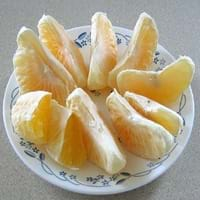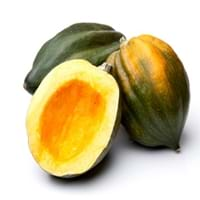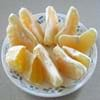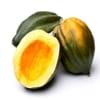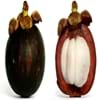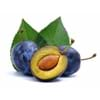Health Benefits
Increases metabolic rate, Lower blood pressure, Protects against kidney stone formation
Anti-inflammatory properties, Arthritis treatment, Regulates Blood Sugar
General Benefits
Gives you energy
Boosts immune system, Controls blood sugar levels, Digestive aid
Skin Benefits
Skin cleansing
Nourishes skin, Protects skin from oxidative stress
Hair Benefits
NA
Prevents hair loss, Promotes longer and healthier hair, Regulates hair growth
Allergy Symptoms
NA
Asthma, Red rash, Swelling of mouth, tongue or lips
Side Effects
Affects blood glucose levels, Decrease in blood sugar levels, Coagulation
Diarrhoea, Vomiting
Best Time to Eat
As a snack in the late afternoon, Eat the fresh ones, avoid mixing with any other foods, don't eat after meal., Morning time (before lunch)
Along with meal, As a snack in the late afternoon, Don't eat after meal, Eat the fresh ones, avoid mixing with any other foods, don't eat after meal.
Vitamin A (Retinol)
Not Available
Vitamin B1 (Thiamin)
Not Available
Vitamin B2 (Riboflavin)
Not Available
Vitamin B3 (Niacin)
Not Available
Vitamin B5 (Pantothenic Acid)
Not Available
Vitamin B6 (Pyridoxin)
Not Available
Vitamin B9 (Folic acid)
Not Available
Vitamin C (Ascorbic Acid)
Water Content
Not Available
Calories in Fresh Fruit with Peel
Calories in Fresh Fruit without Peel
Not Available
Not Available
Calories in Frozen Form
Not Available
Calories in Dried Form
Not Available
Calories in Canned Form
Not Available
Calories in Pie
Not Available
Varieties
NA
Bush Table Queen, Heirloom Table Queen, Festival Hybrid, Early Acorn Hybrid, Table Ace, Ebony and Cream of the Crop
Color
Orange, Yellow
Dark green, Green-yellow, Orange green
Inside Color
Creamy Yellow
Yellow
Texture
Succulent
Fibrous
Origin
Jamaica
Central America, North America, Unknown
Soil Type
Loamy
Well-drained
Climatic Conditions
Warm
Cold, Sunny
Facts about
- The name is derived from the word "ugly" refering to the it's unpleasant appearance, with rough, wrinkled, greenish-yellow rind, wrapped loosely around the orange pulpy citrus inside.
- It was named as Acorn Squash for its resemblance to a large ribbed acorn.
- It is said that squash was being grown in Mexico as long as 10,000 years ago.
- It was the first food cultivated by native American Indians.
Top Producer
Jamaica
China
Other Countries
NA, United States of America
Egypt, India, Iran, Italy, Mexico, Russia, Turkey, Ukraine, United States of America
Top Importer
Europe
Costa Rica
Top Exporter
Jamaica
United States of America
Botanical Name
Citrus reticulata × Citrus paradisi
Cucurbita Pepo
Synonym
Tangelo, citrus tangelo
Winter Squash
Subkingdom
Tracheobionta
Tracheobionta
Division
NA
Magnoliophyta
Class
Unknown
Magnoliopsida
Subclass
Rosidae
Dillenhidae
Order
Sapindales
Cucurbitales
Family
Rutaceae
Cucurbitaceae
Species
C. reticulata × paradisi
Pepo
Generic Group
Citrus fruit
Not Available
Compare Ugli fruit and Acorn squash
It is important compare Ugli fruit and Acorn squash as both the fruits have a different nutritional value. Their comparison can be done on the basis of their vitamin and mineral content, calories, benefits as well as characteristics, making it easier for us to choose the best fruit for our diet. Their general health benefits are as follows:
Ugli fruit Benefits: gives you energy.
Acorn squash Benefits: boosts immune system, controls blood sugar levels and digestive aid.
Fruits are also used as a remedy for various hair problems. The hair benefits of Ugli fruit are: na and hair benefits of Acorn squash are: prevents hair loss, promotes longer and healthier hair and regulates hair growth. Some fruits are known to cause allergic reactions. The allergy symptoms of first fruit are: na and the symptoms of second fruit are: asthma, red rash and swelling of mouth, tongue or lips. Get sorted Ugli fruit vs Acorn squash comparison with the help of fruit comparison tool by fruitvs.com.
